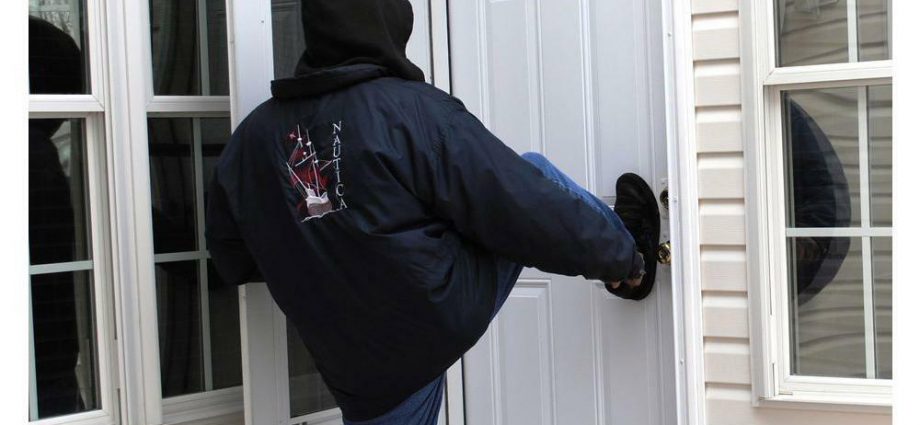Doors are something we often do not think about. Many parts of a house have one job to do, like keeping out the rain or providing power. Doors are different. They have to do two things, be easy to open and close for you, but impossible for anyone else. Security versus easy access can be a difficult balance.
Security would be simple enough to solve with double locks, extra deadbolts and lockable throw bolts top and bottom. But then you would be standing there forever working through five or six key combinations every trip in and out. You could invest $750 to $1,000 in a state-of-the art electronic lock that reads your fingerprint, or pay for installation plus ongoing monthly fees to link your door locks to a security monitoring service.
The problem is that most intruders aren’t sophisticated thieves who picklocks or bypass alarm systems. More likely they’re thugs who kick down the door – often still attached to the jamb – and are in and out in minutes. The upshot? You can’t make a house burglar proof. But you can dramatically improve exterior door security without compromising easy access.
Most exterior doors come to the job site pre-hung. That means the manufacturer provides the door, jamb, hinges, and sometimes the surrounding trim plus locks all assembled and ready to go. And to ensure that their products work as intended, manufacturers generally add cross bracing and temporary screws to keep the door properly positioned in the jamb during installation.
Prehungs cost more, but save time. And these days, you’re well off having the factory mortise hinges and locks instead of a carpenter in a hurry onsite. The package (braces still on, hopefully) is set into a rough opening between wall studs. It’s called a rough opening because there is a little maneuvering room – just enough to make sure the door assembly is dead plumb even if the studs aren’t.
Then the assembly is pinned in the opening with shims (pieces of angled wood shingles) and a few nails. Some carpenters use a series of shims on the sides and a couple across the top. But some skimp, and leave the assembly supported in only a few spots.
That makes your door and jamb about as strong as a cardboard box. So what’s the point of installing elaborate locks on a door attached to a jamb held with shims and a few finishing nails? There is no point. Without pulling the trim on the exterior and interior walls, there are several easy DIY ways to make a door a lot stronger and safer.
Reinforcing the Jamb
Pry off the doorstop – the trim on the jamb that the door closes against. Find where the jamb has been tacked through the shims and drive a long screw in each location. Long means about three inches –enough to reach through the 3/4-inch jamb, the 1/4-inch or so shimming space and about two inches into the adjacent wall stud. Don’t over-tighten the screws. That could bow the jamb and throw the door out of kilter. Drive them flush, then reinstall the stop. Now the doorjamb is secured to the house frame, which is impossible to kick down.
Reinforce the Hinges
Improve the door connection to the strengthened jamb by removing at least one screw in each jamb-side leaf of each hinge (usually it’s a short screw), and substituting one that will reach well into nearest wall stud. Now the door is strongly secured to the jamb plus the house frame making an even more formidable barrier.
Reinforce the Keepers
The keeper is a small piece of hardware on the handle side of the jamb that accepts the latch and locking bolt from the door.
It’s another item often supplied with short screws that should be replaced. On an exterior door you may find two keepers (for the main latch and deadbolt latch) or one larger keeper that accepts both. On the hinge side you now have two or three solid connections to the house. On the handle side there’s only the keeper. It’s a critical connection, and often the weakest link because the jamb is drilled or chiseled out to make room for the hardware. That weakens the jamb and makes it more likely to split away than other sections if the door is forced. If you were going to add only two long screws in the entire jamb, add them to the keepers, which secure the handle side jamb to the house.

